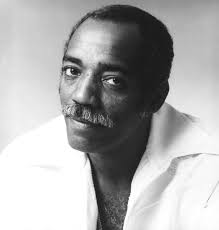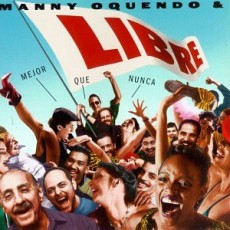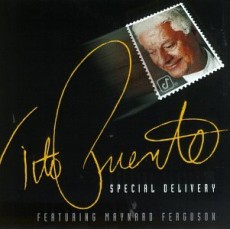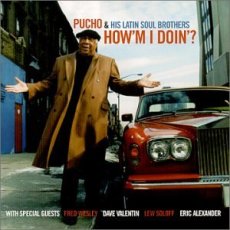
Three Wishes
While hanging out with Nica having conversation one evening, she inquired of Willie Bobo that if given three wishes that would be granted what would he wish for and he replied:
- “Health.”
- “Wealth.”
- “Time to enjoy it!”
More Posts: baroness,conga,history,instrumental,jazz,music,pannonica,percussion,three,timbales,wishes

Daily Dose Of Jazz…
Armando Peraza was born May 30, 1924 in Lawton Batista, Havana, Cuba and was orphaned by age 7 and lived on the streets. By twelve he was supporting himself by selling vegetables, coaching boxing, playing semi-pro baseball, and becoming a loan shark. His music career began at seventeen when he heard at a baseball game that bandleader Alberto Ruiz was looking for a conga player and Ruiz’s brother was on the same baseball team as him. Despite the absence of experience in music, he practiced and won the audition.
He left Cuba for Mexico in 1948 to tend to his sick friend, conga drummer Mongo Santamaría. They arrived in New York City in 1949 and after playing in Machito’s big band, Peraza was invited by Charlie Parker to participate in a recording session that included Buddy Rich. He recorded with Slim Gaillard in New York Cuty in 1949 in a session that produced Bongo City and toured the U.S. with him band until they reached San Francisco, California. He spent time in Mexico recording with Perez Prado and did some soundtracks for the Mexican movie industry.
Returning to the U.S. he settled in San Francisco, worked with Dizzy Gillespie, toured extensively with Charles Mingus and Dexter Gordon, and played with Puerto Rican actor and musician Tony Martinez. Armando led an Afro-Cuban dance review at the Cable Car Village Club in San Francisco, attracting a clientele from Hollywood that included Errol Flynn, Marlon Brando, and Rita Hayworth.
By 1954, he was working with pianist Dave Brubeck, Peraza met Cal Tjader, and jazz critic Leonard Feather recommended Peraza to Fantasy Records to record an Afro-Cuban album with Tjader. The result was Ritmo Caliente, which combined Afro-Cuban rhythms with a jazz sensibility. Following this he met George Shearing through bassist Al McKibbon and he spent the next twelve years with the pianist, a collaboration that put Peraza at the forefront of Afro-Cuban music.
Armando emerged as a composer, writing and recording twenty-one songs for Shearing, such as Mambo in Chimes, Mambo in Miami, Ritmo Africano, Armando’s Hideaway, This is Africa, and Estampa Cubana. These recordings were during the mambo craze in the U.S. and the world. In 1959, he joined Mongo Santamaría for the Mongo album, then became a member of Cal Tjader’s band for six years, followed by a stint with drummer Shelly Manne.
He recorded one solo album, Wild Thing, was the first Afro-Cuban percussionist to add conga drums to a rock track, an in 1972, at the age of 47, Peraza joined the rock band Santana, influencing andtrmining for nearly twenty years and played to millions of people around the world, partnering with percussionists José Areas, Mingo Lewis, Raul Rekow, and Orestes Vilató. He wrote or co-wrote sixteen songs recorded by Santana.
Peraza retired from Santana in 1990 at the age of 66, played a Santiago de Chile concert with Santana in 1992, returned to Cuba after fifty year absence in 202, and recorded on the John Santos, 20th Anniversary in 2005, At 82 years of age, in 2006 he made a rare appearance with Santana for a three show performance at the Montreux Jazz Festival in Switzerland. In 2007, he received a Lifetime Achievement Award from the Voices of Latin Rock, who present the Armando Peraza Award for achievement in the San Francisco Bay Area every year.
On April 14, 2014 Latin jazz percussionist Armando Peraza who played congas, bongos, and timbales transitioned from complications of pneumonia. He was 89.
More Posts: bongo,conga,history,instrumental,jazz,music,timbales

Daily Dose Of Jazz…
Manny Oquendo was born on January 1, 1931 in New York City of Puerto Rican ancestry. Growing up he began studying percussion in 1945 and went on to work in the tropical bands and Latin music ensembles like Carlos Valero, Luis del Campo, Juan “El Boy” Torres, Chano Pozo, Jose Budet, Juanito Sanabria, Marcelino Guerra, Jose Curbelo and Pupi Campo.
In 1950, he became the bongo player for Tito Puente followed by Tito Rodriguez four years later. He moved on to Vicentico Valdes the next year and freelanced in the City before joining Eddie Palmieri’s Conjunto La Perfecta in 1962, where he helped develop the New York style of the mozambique rhythm.
Manny co-led Conjunto Libre with bassist Andy González from 1974 and had a worldwide hit with the Freddie Hubbard composition Little Sunflower in 1983 on the album Ritmo, Sonido y Estilo. He also was a sideman with Paul Quinichette.
His timbales solos were famous for their tastefully sparse, straight forward “típico” phrasing and his solos also incorporated the rhythmic language of the folkloric quinto, the lead drum ofrumba. Percussionist Manny Oquendo, who also played bongos, timbales, and left a small catalogue of nine albums as a leader, passed away on March 25, 2009.

Daily Dose Of Jazz…
Tito Puente was born Ernesto Antonio Puente on April 20, 1923 at Harlem Hospital in New York City and spent the majority of his childhood in Spanish Harlem. As a child his mother sent him to 25-cent piano lessons and by the age of 10, he switched to percussion, drawing influence from jazz drummer Gene Krupa. He later created a song-and-dance duo with his sister Anna in the 1930s, intending to become a dancer, but an ankle tendon injury prevented him pursuing dance as a career. When the drummer in Machito’s band was drafted to the army, Puente subsequently took his place.
After serving three years in the Navy during WW II, Tito used the GI Bill to study music at Juilliard School of Music, taking conducting, orchestration and theory. During the 1950s, Puente was at the height of his popularity, and helped to bring Afro-Cuban and Caribbean sounds, like mambo, son, and cha-cha-cha to mainstream audiences. He moved into more diverse sounds, including pop music, bossa nova and others, eventually settling down with a fusion of Afro-Cuban and Latin jazz genres that became known as “salsa” (a term that he disliked).
Tito has received the key to the City of New York, the James Smithson Bicentennial Medal from the Smithsonian and been inducted into the National Congressional Record. He has won five Grammy Awards, and won a Grammy at the first Latin Grammy Awards for Best Traditional Tropical Album for Mambo Birdland. He was posthumously awarded the Grammy Lifetime Achievement Award in 2003 and has his timbales on display at theSmithsonian.
He has had a post office in Spanish Harlem named after him, an amphitheater in San Juan Puerto Rico, performed at the closing ceremonies for the 1996 Olympics, appeared as himself on the Simpsons episode “Who Shot Mr. Burns?”, and has a star on the Hollywood Walk of Fame,
In early 2000, he shot the music documentary Calle 54. After a show in Puerto Rico, percussionist, timbale player and bandleader Tito Puente suffered a massive heart attack and was flown to New York City for surgery to repair a heart valve but complications developed and he died during the night of May 31 – June 1, 2000.
More Posts: timbales

Daily Dose Of Jazz…
Pucho was born Henry Lee Brown on November 1, 1938 in New York City. Living in Harlem he cultivated a love for jazz, rhythm and blues, and mambo and largely self-taught imitating his favorite musician, Tito Puente. He started playing timbales professionally in New York City at the age of sixteen in bands led by Joe Panama in Harlem and the Bronx.
He formed his own band, Pucho & His Latin Soul Brothers in 1959 as a Latin jazz, soul jazz and R&B group and appeared at Count Basie’s club and a Carnegie Hall festival. Over the course of the group’s tenure of thirteen years, of the many musicians that worked in his group, Chick Corea is listed among them.
From 1966 until ’74 he recorded a series of albums for Prestige Records, and due to their musical range recorded with George Benson, Lonnie Smith and Gene Ammons. Disbanding the group in the mid Seventies he concentrated on more traditional Latin music. During the late ‘70s and ‘80s he worked the Catskill Mountain resorts with a small trio until a resurgence of interest through the acid-jazz movement in the Nineties gave way for him to re-form the group and tour Britain and Japan.
Pucho, the timbales player who just may have been to eclectic for a wider jazz audience acceptance, has since released new material, had his early material reissued and continues to perform.
More Posts: timbales




